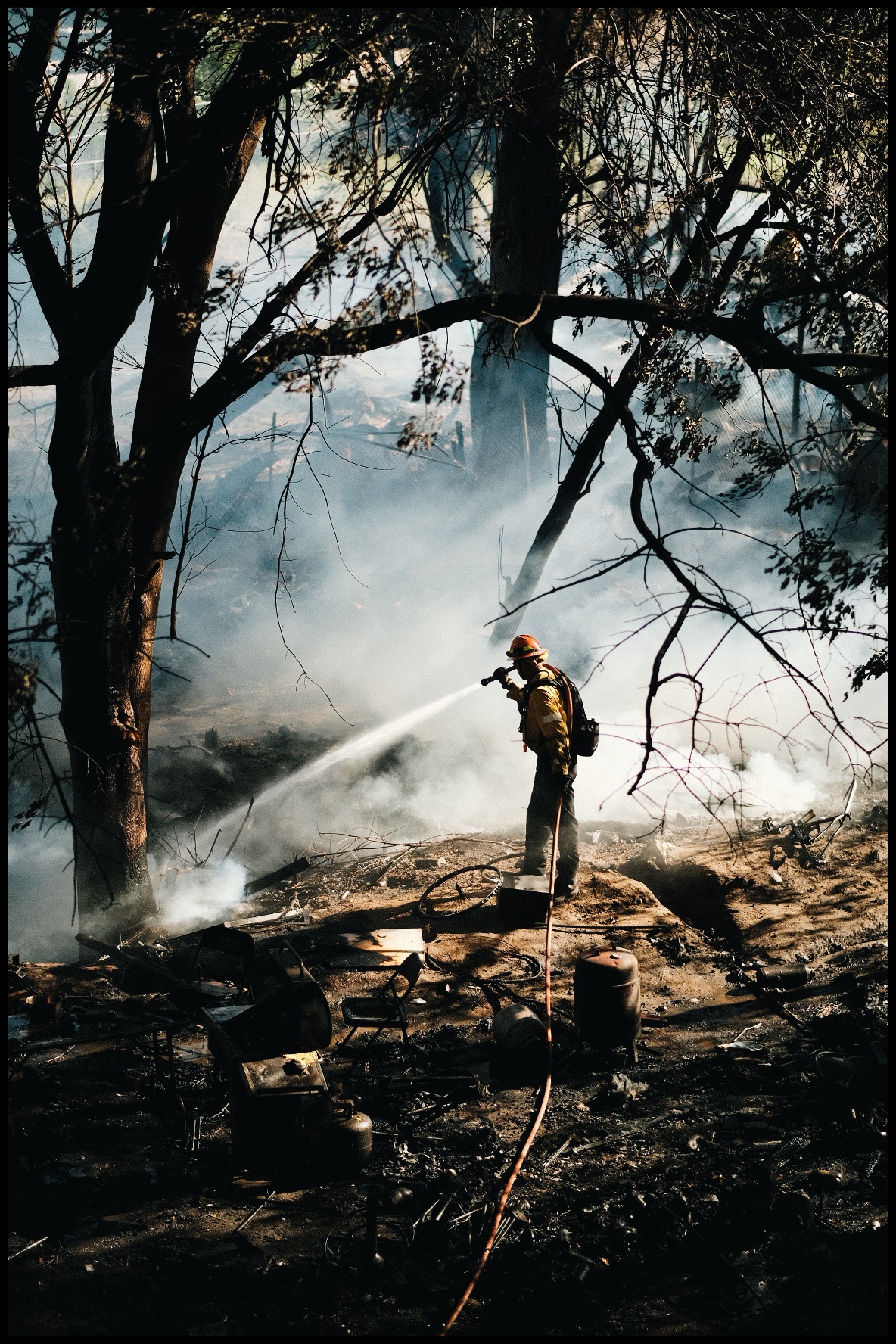“We don’t take enough time to really appreciate a good photograph,” says San Fernando Valley native Brandon Taylor about the result of the photos we are inundated with daily. Nearly losing his own home in a wildfire some years ago made him take a closer look at the effects on surroundings and people’s lives that wildfires have. He now does his bit to document as many wildfires as possible and showcase the work of the heroes of various fire departments.
We hate banner ads too. Download our app for iOS, iPad, and Android and get no banner ads for $24.99/year.
As I put together this interview, parts of the eastern coast of the UAE (the country where I reside) are still reeling from some of the heaviest rains in recent times. People in the city there have had their homes flooded. The streets were waterlogged for over 24 hours, and cars in many areas were almost completely submerged. It’s unheard of to see rain in July, a month that’s more common for its 100F-plus temperatures. Nature can be a powerful force that humbles us all. But what I do observe is people documenting their situation out there. Photography can be a cathartic tool. When an emotional event really affects people, I’ve seen how they recuperate using photography as a medium for expression. I can only imagine what Brandon must have been going through as his house was nearly consumed by a wildfire. That incident changed the way he looked at wildfires and the devastation they often cause. He puts aside emotions while documenting them nowadays and aims to get the story in with the best possible set of images. What I find fascinating is that he does most of this work on film cameras.
The Essential Photo Gear Used by Brandon Taylor
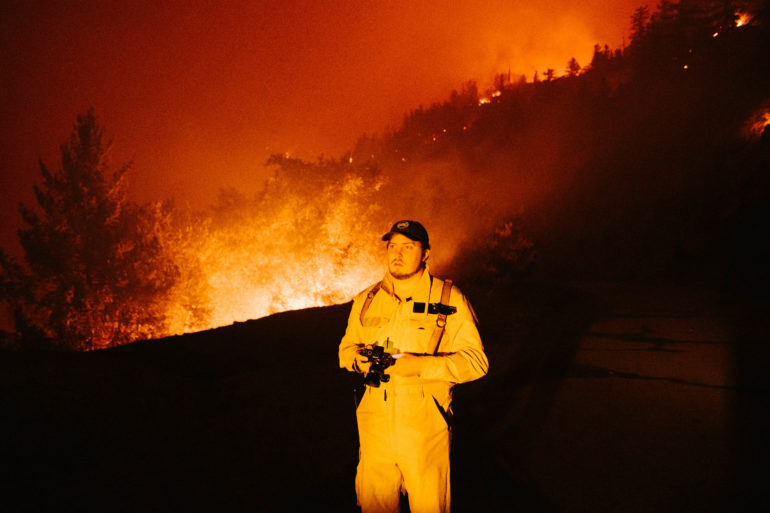
Brandon told us:
- Leica M6
- Hasselblad 500CM
- Mamiya 7 II
- Fujifilm X-Pro3
- Fujifilm X-T4
Shooting with a rangefinder camera is a bit different compared to an SLR since you can see directly through the viewfinder and see the frame lines. It helps you compose the image and focus on framing compared to a SLR, where you can only see through the lens and are limited. Focusing is a bit more tricky because you line up two images in the viewfinder to focus. It takes a bit of time to get used to, but once you get the hang of it, it becomes second nature and you can focus super quick.
The Phoblographer: When did you find yourself beginning to have an interest in photography? Tell us a bit about this.
Brandon Taylor: My name is Brandon Taylor, and I grew up in the San Fernando Valley. I am the son of a professional photographer, so I was familiar with cameras but didn’t start taking photography seriously until high school. Prior to this, I spent more time painting and creating art, but it wasn’t until my senior year in high school that I picked up a camera and started taking photos. Although I started off with digital photography and still shoot a lot of it, I really fell in love with film. I was at an event at my Jr. College and was given a few rolls of film from a guy who was working for Fujifilm and had a booth. It was the first time I had thought about shooting film. I brought the rolls home and asked my dad if he had any cameras that shot 120 film, and he pulled out his old Hasselblad 500cm. He showed me how it worked and taught me how to use a light meter. I loaded the roll and shot 12 photographs. When I got the roll developed and saw the images, I was blown away! There was something so different and interesting with each image.
Since then, I have shot over 4000 rolls of film in 35mm, and medium format as well as 4×5 and 8×10. I enjoy the limitation that film presents. You pick your camera and choose the film based on the subject that you are photographing. Picking a roll and having to stick with one ISO or in color or black-and-white makes it a good challenge. With a digital camera, you can change everything in the settings, but with film you can’t change it until you finish the roll. Similarly to painting, you pick up a paintbrush and choose the paint depending on what you are going to paint on canvas. With film photography, you pick your camera and film, and you use that for the next 36 shots. I started exploring and trying out new cameras since each camera has its own limitations. This taught me to really hone on what type of gear I enjoyed shooting with and which camera or film gave me the desired look that I was envisioning. After 8 years of shooting on film, I still get the same excitement when seeing my photos developed.
I attended Biola University and graduated in 2019 with a Bachelor of Fine Arts in Studio Arts with an emphasis in photography and painting. In 2014 I started my own photography business specializing in weddings, events, portraits, and photojournalism. I am also a fine art painter specializing in traditional sign painting and graffiti-style art. This has helped with framing and composition and brought a sense of design to my photos.
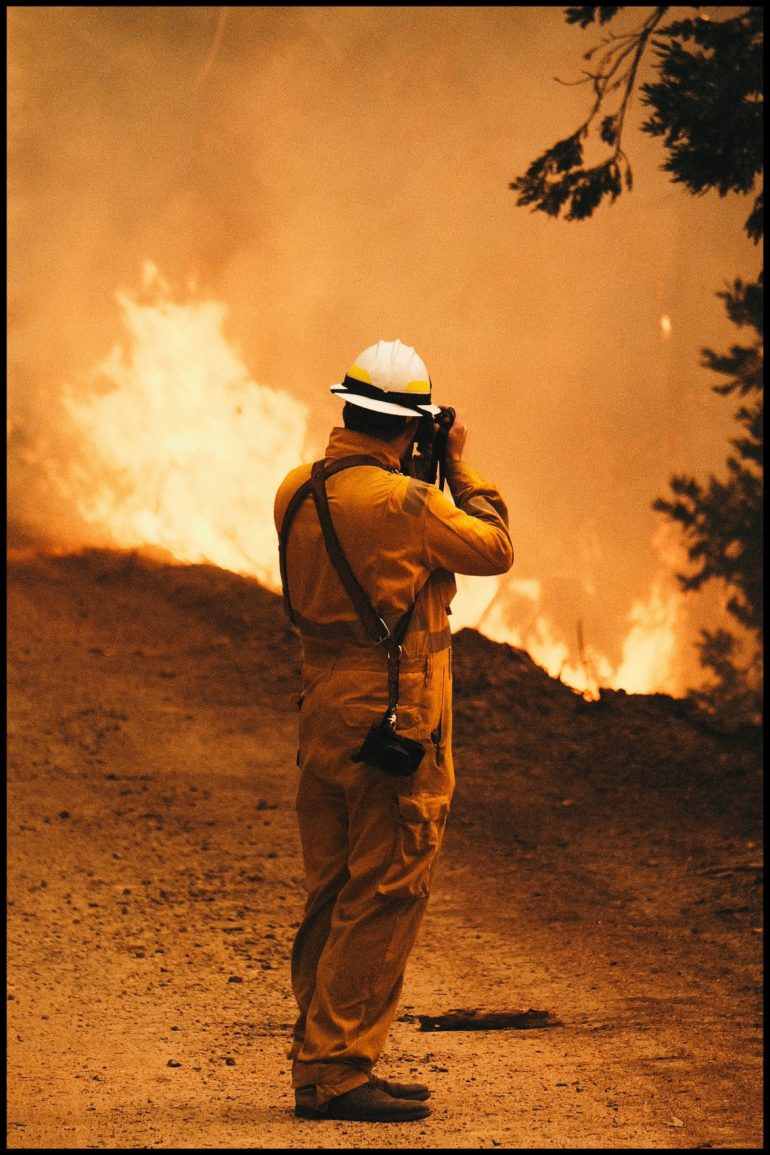
The Phoblographer: When did you begin documenting wildfires and the stories around them?
Brandon Taylor: I photographed my first wildfire in December 2017 at the Thomas Fire in Ventura County. I went out the first night and started documenting the fire. I had been intrigued by wildfire photography after seeing Marcus Yam’s work. Around that time, I had been doing street photography for a few years and other journalistic work for Biola University’s newspaper as a photographer. A year later, in November 2018, the Woolsey fire broke out 2 miles from my house. The night the fire started, I went out with my camera and tried to take photos. The fire was very hard to photograph since it was deep in the mountains, making accessing the fire difficult. By the next day, the fire had reached my neighborhood and was actively burning closer and closer to my home. During that time, I was helping my family evacuate, and I was sneaking out to take photographs when I got the chance. After we had evacuated with my family, we weren’t allowed back in. The fire burned into my neighborhood but stopped at the house a street over. This really changed the way I looked at this type of documentary work since I had been affected firsthand.
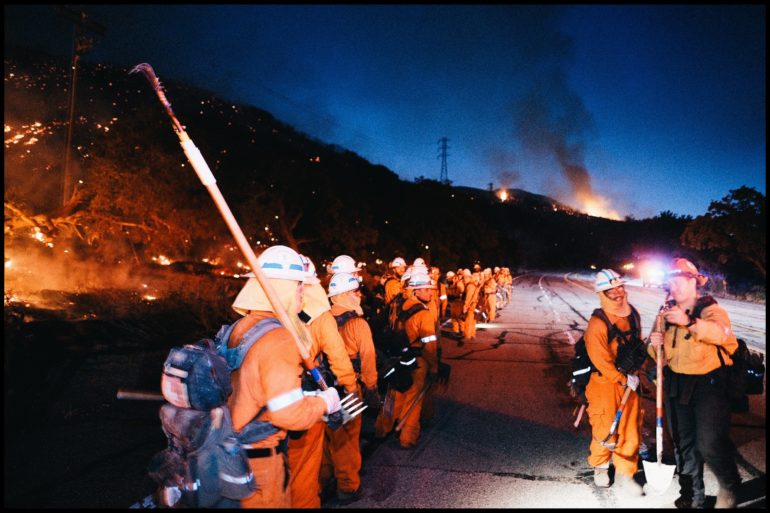
The Phoblographer: Do wildfires often happen in the area you live in? What tends to cause them, and what can be done to prevent them?
Brandon Taylor: Living in Los Angeles County, I am surrounded by a lot of areas that constantly catch on fire. A large majority of fires start from electrical problems, the Santa Ana Winds, cigarettes, broken glass, fireworks, etc. Many of these areas are covered in dead brush caused by the drought. The Santa Ana winds cause fires to grow and spread rapidly. You can help combat and protect your own home or land by doing the proper brush clearance and making sure that there are no fire hazards surrounding your home.
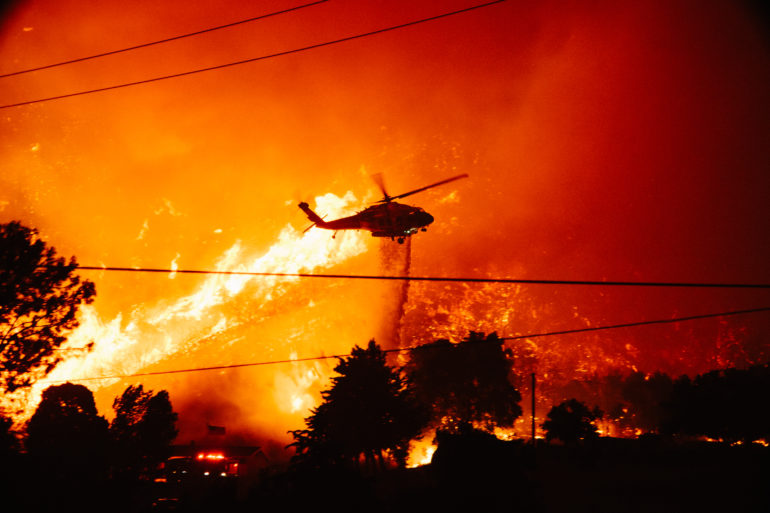
The Phoblographer: It’s almost a thankless job. Have you photographed the relief on the faces of the hero firefighters after they put out a fire?
Brandon Taylor: Since documenting these fires and accidents, I have become friends with a lot of the firemen and other first responders.
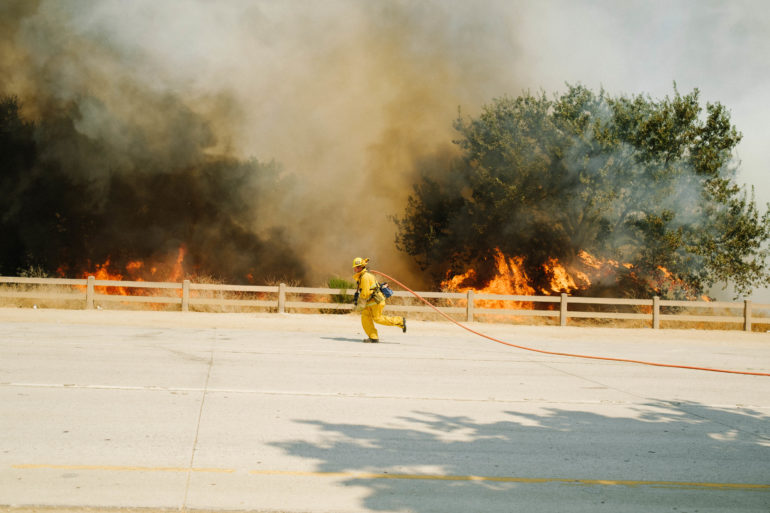
I started sending in my photographs to the fire departments and the first responders, and they are always so thankful. They are risking their lives and are put into some crazy situations.
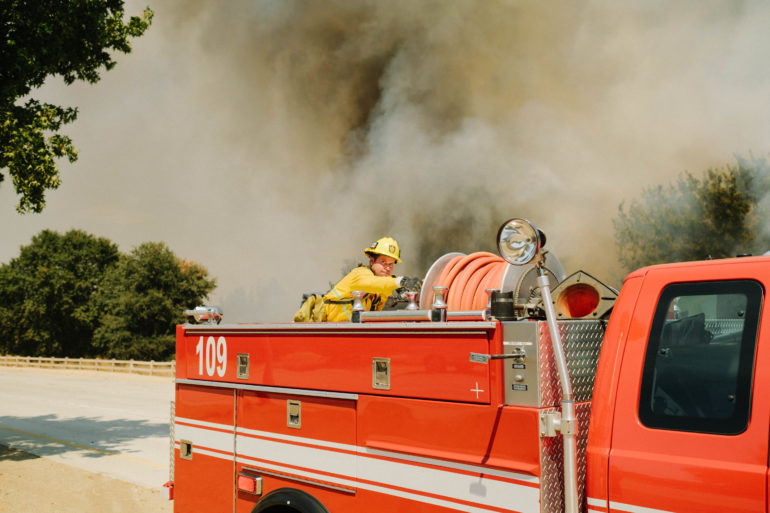
I have been using the Leica M6 for over 6 years and it has not let me down. It’s been around my neck at every fire, since it is so compact and works perfect for documentary work. Despite the camera not being fully weather sealed, it is able to withstand the harsh conditions of shooting wildfires. It has solid seal protecting it from the elements which is important for photographing fires.
The Phoblographer: As a photojournalist who works closely with firefighters, do you need to wear protective gear while documenting? What about camera gear maintenance after each such shoot?
Brandon Taylor: Definitely. Wearing the proper PPE is not only protecting you but keeping you from becoming the news story. When I first started, I didn’t have the right clothes or gear, and looking back, I’m surprised I never got hurt. Going into a fire now, I suit up with my protective gear before grabbing my cameras. I wear a full Nomex jumpsuit and carry safety shelter, radios, boots, helmet, goggles, respirator, gloves, and a few more things. Even with the gear on, you aren’t fully protected, so paying attention to what is happening around you and on the radios is key. Aside from the flames and smoke, aircraft water and retardant drops are extremely dangerous. Making sure you have 2-3 routes of escape and are constantly watching your back. It only takes a few seconds for something crazy to happen and for you to get hurt. Understanding how wildfires work and how to properly stay safe is also important. As a journalist you are allowed to go in and get close, but you want to make sure to stay safe and out of trouble. If you get hurt first responders fighting the fire would have to come get you. It is also a good idea to make sure you have water and food so that you are thinking correctly and have the strength to handle the long hiking with heavy gear.
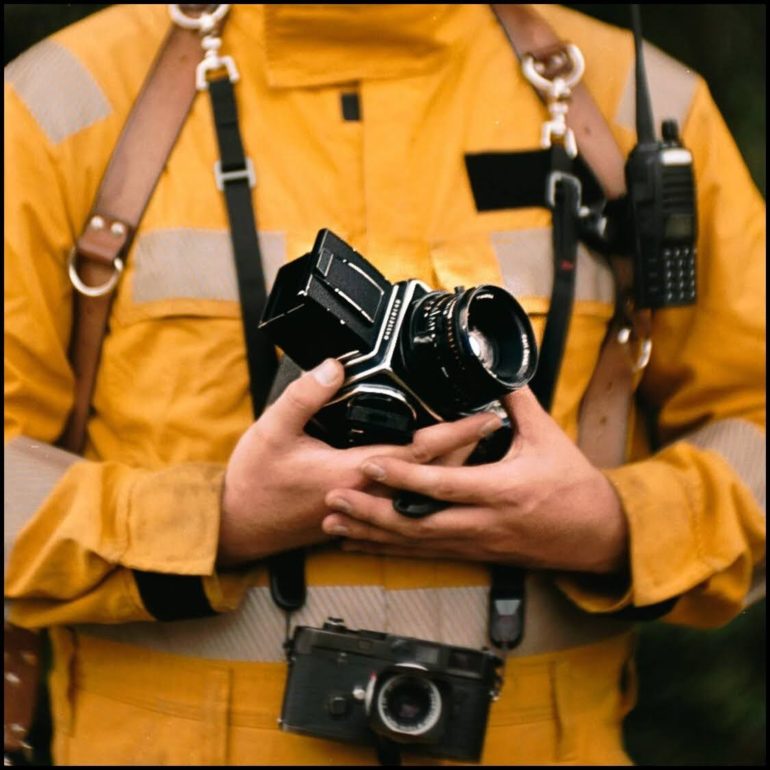
After each fire, I always make it a point to “decontaminate” and clean off my gear and myself. Cleaning off ash and dirt is very important since it can get into your lungs later when you aren’t paying attention. I blow off each camera and wipe them down to make sure that there is no dust on the sensors or in the lenses and make sure all the batteries are charging.
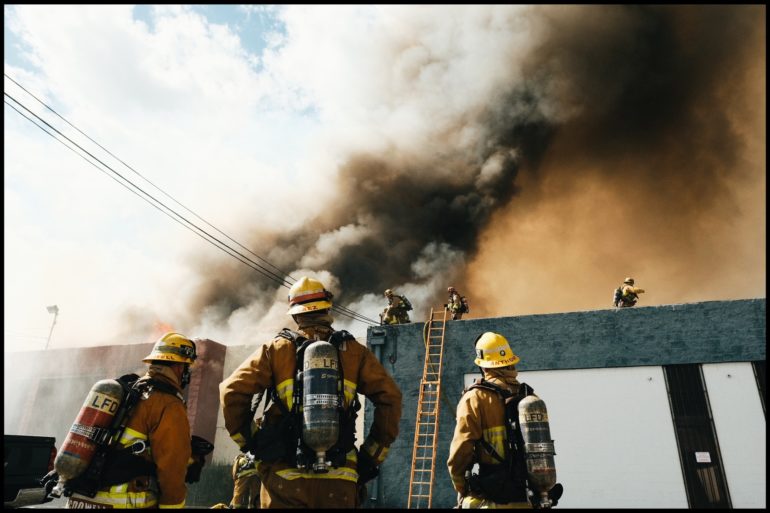
The Phoblographer: How close do you get before it becomes uncomfortable? Is this where super zoom lenses come in handy?
Brandon Taylor: I try to get as close as I can, but not close enough to get injured. I tend to use prime lenses, which can require me getting pretty close, but having a long lens or zoom is always super helpful. Staying safe and not dying is my number one priority. A photo isn’t worth your life, so I try to always have an escape planned out in case the wind shifts and the situation becomes dangerous. I also make sure my car is facing away from the fire in case I have to quickly leave. It all depends on the situation at hand and the conditions around me.
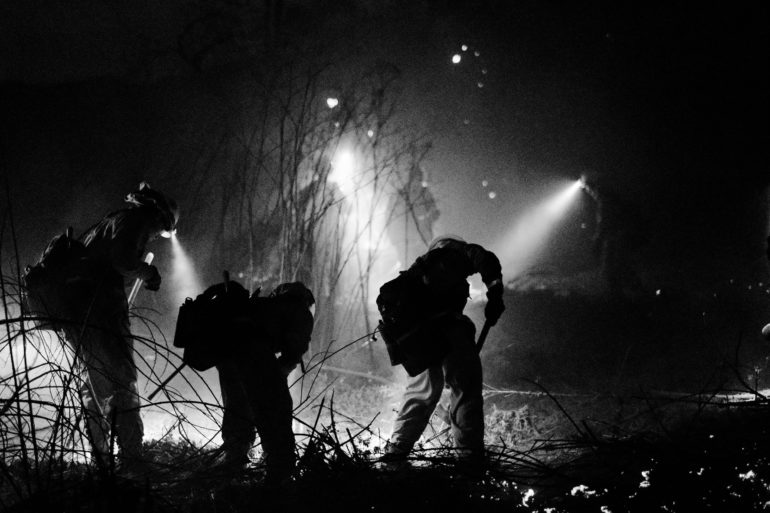
For medium format I use my dad’s Hasselblad 500CM, and also a Mamiya 7 II. I try not to take the Mamiya into the crazy fires since it is a bit more fragile and can melt because of the plastic body. I use it for shots that are not in the harsh elements. The Hasselblad has a metal body and is fully mechanical so I don’t have to worry about the heat and harsh environment causing damage. Because of its size, medium format rolls are typically limited to 10-12 photos, but unlike 35mm, the much larger negatives result in significantly higher quality images. I do need to make sure I bring extra film, since it has a low amount of shots per roll.
The Phoblographer: You’ve also probably seen so many unfortunate endings due to these fires. Does that take an emotional toll on you?
Brandon Taylor: I have, and it is hard. You see a lot of tragedy and sad endings. I’ve noticed myself reflecting more on those hard photographs when I am editing them or scanning the negatives. During the fire, being able to hold back your feelings is helpful, but you still need to be able to talk it through later. I try to not dwell on the negativity and keep things positive. I have had quite a few people reach out to me after losing their house and express that they were so thankful for the photos of their house or property at the fire.
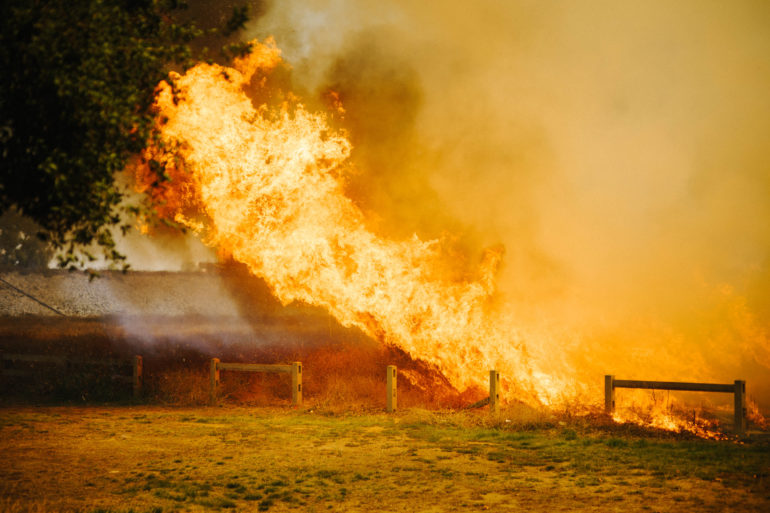
The Phoblographer: A ‘traditional analog film in a digital era’ – does this tagline get a more clients?
Brandon Taylor: It surprisingly gets me more work. A lot of my clients enjoy the look and style that is in my images. Film photographs have a different look and feel to them. I shoot film because of the look and enjoy the extra steps and process it takes to create. With the limitations of how many photos you can take and not being able to see them instantly; it changes the way you shoot and think. It forces you to make each image count and really think about the subject you are shooting.
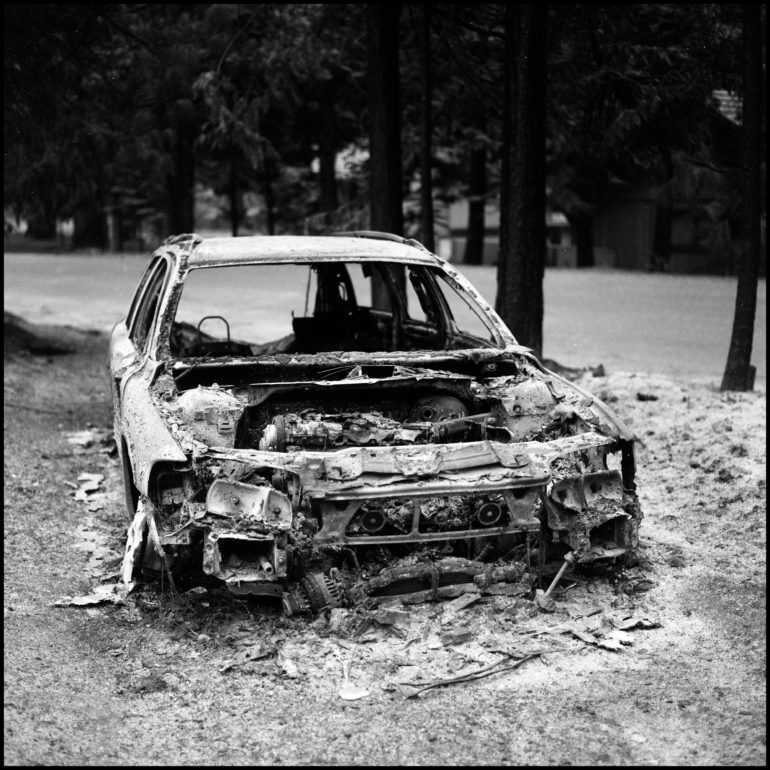
I do shoot digitally as well, but I would rather spend more time in the darkroom developing and printing than sitting in front of a computer editing images. Living in a digital era where everyone has a smartphone with an amazing camera, photographs sometimes tend to lose their value. We don’t take enough time to really appreciate a good photograph because we can take thousands of photos in a matter of seconds. We take photos every day and don’t think about them after, and they are left to sit on a hard drive. With film, it forces you to pay attention to every frame and helps you remember to make each photo count. It costs you for each roll and also your time developing, but each time it is so rewarding.
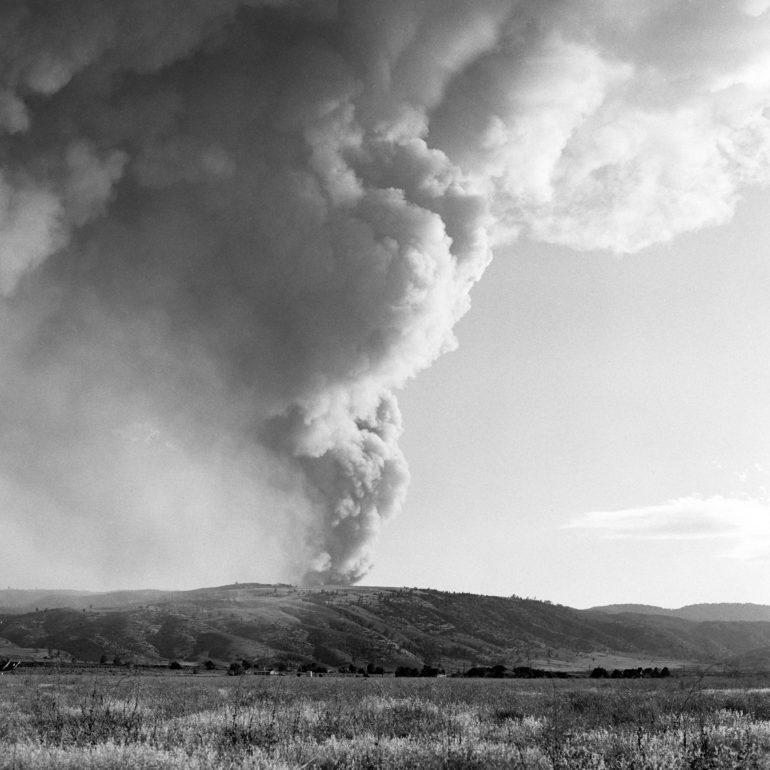
There are definitely benefits to shooting digitally, especially when sending out to news networks or on social media. Being able to quickly send and share the photos within minutes after taking them is definitely needed in this line of work.
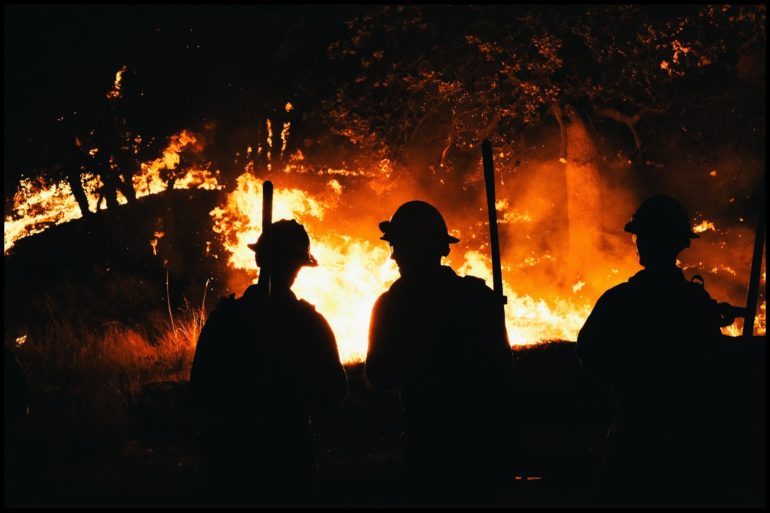
For my digital cameras I use a Fujifilm Xpro3 and an XT4. The main lens I use is the 23mm 1.4 WR. I also use a 16mm, 56mm and 35mm lens. These are all weather sealed which helps from dust and dirt getting inside causing hazy photos. I enjoy the Fujifilm cameras because they have similar tactile knobs and controls like on a film camera, so you can easily change the settings. One of the best features with the camera is that you can add custom color recipes in the camera resulting in images that look just like film with no editing required.
The Phoblographer: You’re also doing a photobook about the day you almost lost your house. Tell us why we would be interested in this book.
Brandon Taylor: Yes! It’s been a project in the works for a while now. The book is just about finished and should be ready really soon. The book documents the Woolsey Fire from my perspective and as someone impacted by the fire. It is one of many more books to come that document what I see and the photographs covering these emergency situations. Keep an eye out on social media to pick up a copy.
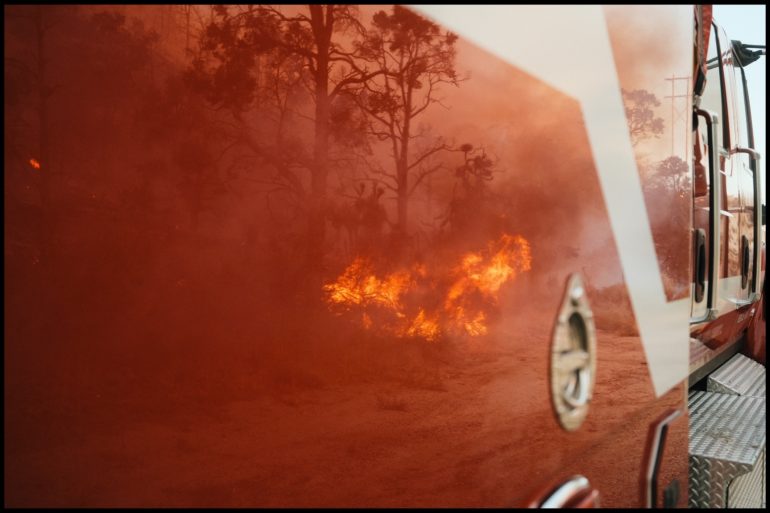
All images by Brandon Taylor (unless otherwise specified). Used with permission. Visit his website and his Instagram and Youtube pages to see more of his wildfire photography.
Want to be featured? Click here to see how.


